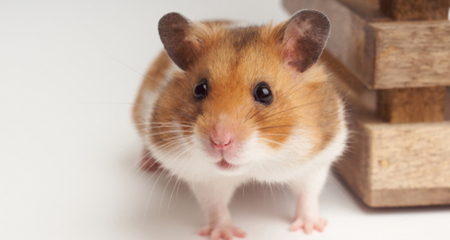Hamster Types for Beginners
Choosing the right type of hamster can be an exciting yet daunting task for beginners. With several species to choose from, each with unique traits and care requirements, understanding the differences is essential for any aspiring hamster owner. In this article, we’ll explore popular hamster types, their care needs, and tips to choose the best pet for you.
Popular Hamster Species
While there are many hamster species, some are more common as pets. Each type has specific characteristics that can affect your decision. Here are the most popular hamster species:
Syrian Hamster
The **Syrian hamster** is the most popular species among pet owners. Known for their friendly and energetic nature, these hamsters are larger than other types, generally reaching lengths of 5 to 7 inches. They have a variety of coat colors and patterns, making them visually appealing. Syrian hamsters are best kept alone due to their territorial nature, especially as they mature. Regular socialization is important to keep them tame, so handling them frequently when young can help.

Dwarf Hamsters
Dwarf hamsters are smaller and more social than Syrian hamsters. There are several species of dwarf hamsters, such as the **Roborovski** and **Campbell’s dwarf**. Roborovski hamsters, for example, are lively and curious but tend to be skittish, making them a bit harder to tame. On the other hand, Campbell’s dwarf hamsters can be more easily socialized and often enjoy living in pairs or small groups, an excellent choice for first-time owners looking for interaction.
Caring for Your Hamster
Caring for hamsters requires attention to detail, especially their habitat, diet, and health. Understanding each type’s specific needs ensures you create an environment conducive to their health and happiness.
Providing the Right Habitat
Your hamster needs a safe, stimulating environment to thrive. For Syrian hamsters, a spacious cage with plenty of enrichment, such as tunnels and climbing structures, is crucial. Dwarf hamsters can get by in slightly smaller cages but still need adequate space for exercise. Utilize bedding like aspen or peat moss, which helps control odors and maintain cleanliness. Ensure that the enclosure has proper ventilation and is escape-proof, as hamsters are known for their climbing abilities.
Feeding Your Hamster
A balanced diet is vital to hamsters’ health. A premium hamster seed mix can serve as the foundation of their diet, supplemented with fresh fruits and vegetables. Some hamster types, especially dwarf hamsters, may be prone to diabetes, so it’s important to monitor their carbohydrate intake. Remove any leftovers after a few hours to avoid spoilage and health risks. Additionally, fresh, clean water must be available at all times, ideally through a water bottle to prevent contamination.
Socialization and Handling
Effective socialization enhances not only your relationship with your hamster but also their quality of life. Understanding their individual temperaments and behavior is key to successful handling.
Handling Your Hamster
Start handling your hamster slowly. Allow them to become familiar with your scent by placing your hand in their cage without grabbing them. Gradually progress to offering treats from your hand. Once they are comfortable, you can begin gently scooping them into your hands. Remember that most hamsters are nocturnal, so handling them during their awake times is best for a low-stress experience.
Recognizing Signs of Stress
Every hamster may react differently to handling. Be observant of their body language; signs of stress include biting, squeaking, or attempting to escape. If these behaviors occur, it’s essential to give them space and gradually reintroduce handling. Resilience in handling will build their confidence and connection with you over time.
Conclusion
Understanding the different types of hamsters available is crucial for beginners. Each breed has specific traits, dietary needs, and care requirements. Whichever type you choose, ensuring proper care and attention will lead to a harmonious relationship with your new pet. Now that you’re equipped with knowledge about hamster types, consider adopting one and enjoy the joys of hamster companionship!
FAQ
1. What is the lifespan of a hamster?
Hamsters generally live between 2 to 3 years, although some may live longer with proper care. All species vary slightly in age expectancy; for instance, Syrian hamsters often live longer than dwarf types. Ensuring a balanced diet, a clean habitat, and regular veterinary check-ups can help extend their lifespan and overall health.
2. Do hamsters require much exercise?
Yes, **exercise** is vital for hamsters. They are active animals that need plenty of physical activity to stay healthy. Providing an exercise wheel in their habitat is essential, along with several toys and tunnels to explore. Ensuring out-of-cage playtime in a safe area encourages essential exploratory behavior.
3. Can I keep hamsters in pairs?
It depends on the type of hamster. **Dwarf hamsters** can often live in compatible pairs or groups if introduced properly. However, keeping a pair of Syrian hamsters together is not recommended due to aggression and territorial tendencies. It’s crucial to research the specific needs of the hamster type when considering companionship.
4. How can I create a stimulating environment for my hamster?
Creating a **stimulating environment** involves adding various enrichment activities in their habitat. Use tunnels, wheels, climbing toys, and hiding spots to enable them to explore and engage. You can also rotate toys frequently to keep their interest alive and prevent boredom. This stimulation is essential for their mental health.
5. What should I do if my hamster is showing signs of illness?
If you notice your hamster exhibiting unusual behaviors, such as lethargy, lack of appetite, or abnormal movement, it’s important to consult a veterinarian. Quick action can address health issues effectively. Regular health check-ups are essential to monitor their condition and detect potential risks early.
